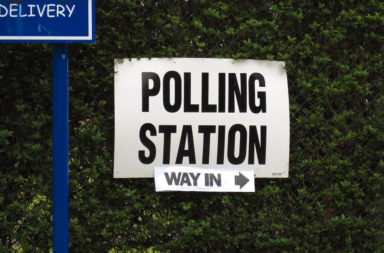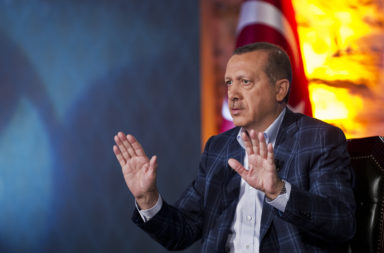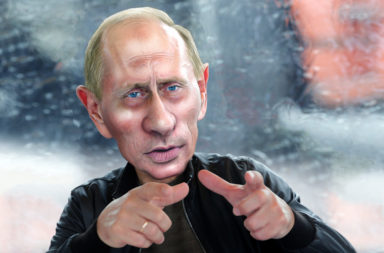Nearly a month after the hurricane, Puerto Rico still is still struggling with a near-total information blackout. Some 85 percent of the island lacks electricity, and several remote mountain communities have yet to be visited by relief workers.
The death toll has risen from 16 to nearly 50 as lack of fuel, food shortages and infectious illnesses take their toll. Over 100 people are still missing.
The island is so crippled in part thanks to the federal government’s underwhelming early hurricane response. The historic storm played its role, of course, destroying homes, triggering mudslides and rendering roadways impassable.
But the Trump administration delayed dispatching military personnel and material relief until after the hurricane made landfall, and let the Jones Act waiver lapse, reducing the number of ships that can bring aid to the island. These actions have slowed recovery considerably.
Numerous commentators – including Ret. Lt. Gen. Russel Honoré, who ran the U.S. military’s 2005 Hurricane Katrina relief operation – have criticized the Trump administration’s Puerto Rico storm response. Others have contrasted it with the all-hands-on-deck support seen by Harvey and Irma victims in Texas and Florida.
Racial bias may explain these disparate relief efforts, at least in part. Environmental disasters lay bare existing inequalities like prejudice and poverty. So in a place like Puerto Rico, where nearly 99 percent of the population is Latino, discriminatory decision-making can hurt the community’s capacity to recover.
An unflattering comparison
In Texas and Florida, the president responded swiftly, visiting these southern states in a matter of days. In Puerto Rico, on the other hand, President Trump arrived to survey the wreckage two weeks after Maria struck.
Likewise, while the president vowed to stand with Texas and Florida “every single day” to help them “restore, recover and rebuild,” he seemed to mock Puerto Ricans’ plight at an Oct. 6 Hispanic Heritage Month event.
Most recently, Trump even threatened to withdraw federal aid from Puerto Rico altogether, even though some communities have yet to see a penny.
There is empirical evidence that skin colour impacts federal assistance. A 2007 study performed by researchers at Stanford and UCLA found that Americans are less willing to support extensive taxpayer-funded disaster relief when the victim population is not white.
Signs of racial bias in the current federal relief efforts go beyond Puerto Rico. The U.S. Virgin Islands, where 98 percent of the population identifies as black or of African ancestry, were also battered by both Hurricanes Irma and Maria, leaving residents “in survival mode.” The Trump administration has also largely ignored their suffering.
Separate and unequal
There are likely other explanations for why America’s Caribbean citizens are seeing such disparate post-storm treatment.
One is political clout. These two U.S. territories were inevitably facing an uphill disaster recovery process because – unlike Texas and Florida – Puerto Rico and the U.S. Virgin Islands don’t have representatives defending their interests in Congress.
Partisanship is another likely factor. Facing historic disapproval ratings, President Trump’s agenda has also narrowed toward rallying his base. It’s predictable, then, that the president worked diligently to help Texas and Florida – states that supported him in 2016 – while neglecting Caribbean residents, who cannot vote in a presidential election.
The differential post-hurricane treatment transcends these political disadvantages and reflects racial bias.
Throughout the disaster relief effort, President Trump’s rhetoric has highlighted just how different Puerto Rico and the U.S. Virgin Islands are from mainland America. He has called the islands’ leadership “poor” and “opportunistic” and blamed Puerto Ricans for the financial crisis that’s now confounding the island’s recovery.
Trump has also railed on Puerto Ricans for “wanting everything to be done for them” and failing to contribute more to the relief efforts. According to the president, not aid workers but Puerto Ricans themselves should be out distributing food and water. Coded language like this raises red flags.
It is especially concerning given President Trump’s own problematic history dealing with race. On the campaign trail he antagonized the Black Lives Matter movement, and as president he defended the violence of white supremacists in Charlottesville.
Flint lives matter
Recent U.S. history also offers examples suggesting that communities of color are neglected when disaster hits.
New Orleans after Hurricane Katrina is the classic case study. After the city’s evacuation plan failed, black Americans were left stranded and desperate for up to 14 days while the federal government’s belated and dysfunctional rescue operation flailed.
Assessing the situation, rapper Kanye West famously went off script at a live fundraiser for hurricane victims, declaring, “George Bush doesn’t care about black people.”
More recently, in April 2014, residents of Flint, Michigan, a predominantly black community, began falling ill after the highly contaminated Flint River became their only water source. Community members raised concern about the foul-smelling water coming out of their faucets, and doctors alerted state and federal officials about elevated lead levels in the water.
Even so, state officials did not acknowledge Flint’s crisis until September 2015, after 91 residents had been diagnosed with waterborne bacterial illnesses. And only this year did the city finally agree to replace their water lines. The city won’t have clean water until 2020.
In short, though environmental disasters don’t see race, people do – and if bias influences the decision-making of those in power, survivors will feel it.
Puerto Rico’s demographics diverge from that of the U.S. general population, where just 18 percent of people identify as Latino and 13 percent as black. President Trump’s behavior seems to reflects that racial difference, whether he knows it or not.




